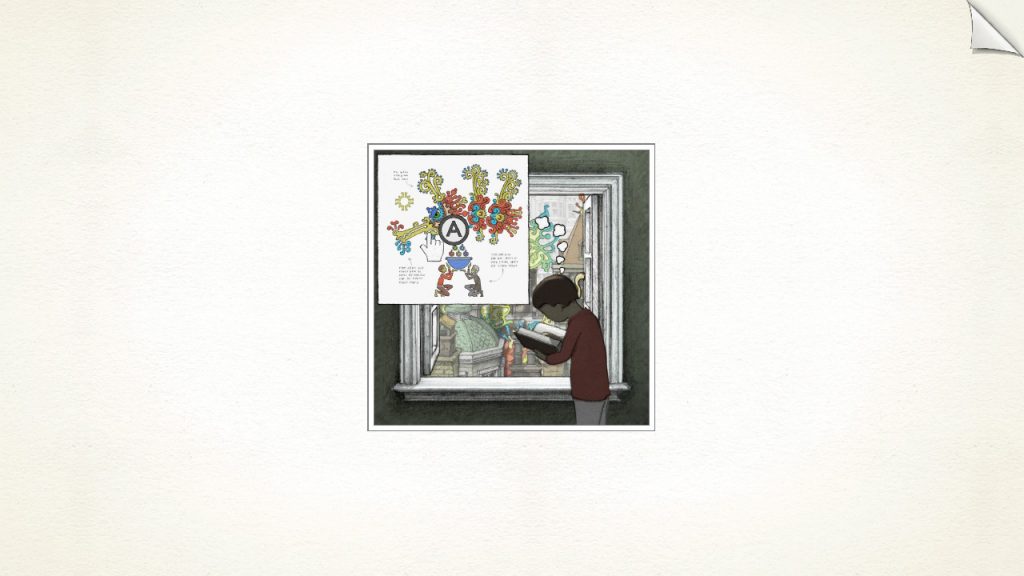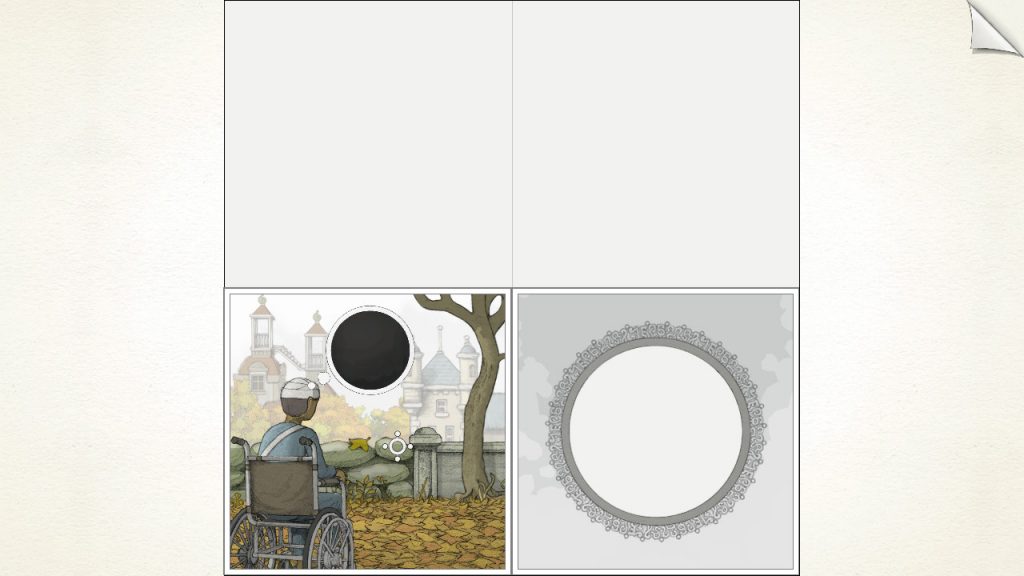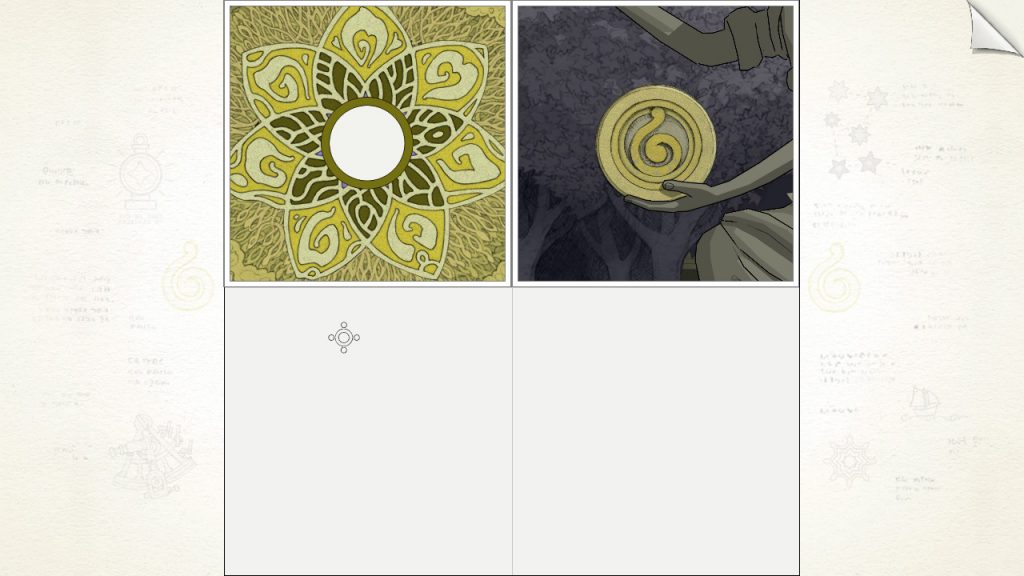

Continue zooming in until a bizarre fractal design appears. Zoom out of the bottom-right cell and focus on the area above the flames. Once he puts the bowl in the hands of one of the statues, move the bowl picture to the bottom-left space. Follow the boy after he walks through, and zoom into the two statues in Gorogoa. By moving the cells, take the painting of the garden entryway from the sign and place it on the wall with the green symbol. To solve this next segment, players must use the world's environment as a solution, much like the puzzles in The Pedestrian. Click on the area where the boy went to find a bricked doorway. The protagonist will venture to the back wall and then out of sight. Wait until he stops moving, and then put the first cell back in the space below. After zooming in, place the bottom left cell on the top left again to allow the boy to walk out. And you’re going to have a brilliant time doing just that.For the next step, click on the white door in the back of the rooftop scene in Gorogoa. Gorogoa is a tactile experience, one that demands to be poked and explored. This is one of those rare times when a game simply wouldn’t work on any platform other than mobile.

And, perhaps more importantly, everything here is trying to tell you something.

From the mandala on a moths wing to the stitching on a pillow, everything here means something. That’s wonderfully refreshing, and even when things get more difficult, there’s a solid, if slightly twisted, logic underpinning the whole thing.Īnd on top of that the game looks incredible. This is a game that doesn’t hold your hand, but at the sam time gives you everything you need to work things out for yourself.
GOROGOA WALKTHROUGH FULL
Gorogoa is full of wonderful eureka moments. You’re dropping stones from a box in one world, letting them fall through two different worlds, and then positioning a bell jar with a butterfly in it underneath them. You’re not just swapping pictures around so the hero can walk from one of them to the next in safety, you’re taking images of stars from books and using them to light lanterns. You’ll zoom in and out a few times, switch frames around, and eventually find that you can add a pile of stones to one end of the shelf.Īnd the game expands even further from there. Once you’ve worked that out, you need to change the weights of the items that are balancing the shelf. You need to get something from one of the shelves onto the other one. In one scene you connect two shelves from different images together. To give you an idea of the sort of thing you’re going to be doing in the game, it’s probably best to share an example. Gorogoa is the sort of game you’re going to sit down and play until the end, and that’s pretty darn special. This is a game that’s fit to bursting with ideas, and it’s all wrapped up with a narrative that makes solving the puzzles feel like something you have to do.

And quite frankly it’s a little bit wonderful. The images you’re playing around with here don’t just need to be put in the right place, you need to zoom in, dissect them, then stitch them back together in the right way to push the narrative on. Gorogoa is definitely hewn from the same rock, but it takes things in an intriguingly different direction. It felt unlike anything you’d played before, with its mixture of action and comic-panel swapping.
GOROGOA WALKTHROUGH HOW TO
The original Framed showed how to take an idea and create a compelling game around it. Might be a little too esoteric for some people.


 0 kommentar(er)
0 kommentar(er)
